
The thermal performance of your building’s walls is only as strong as the weakest link, and windows are too often that weak link. Even if you’ve gone to great lengths to build a super-insulated high performance wall, if you poke that wall full of holes, then plug those walls with mediocre windows, you will get a poorly-performing wall.
Bad windows will ruin the best wall assemblies.
Conversely, good windows can make run-of-the-mill wall assemblies good, and good wall assemblies great. To illustrate the role that windows can play in building performance, Zola worked with building science expert Skylar Swinford to develop a series of scenarios for an exterior wall in a typical multifamily building unit. In each of the scenarios, illustrated below, we compare wall assemblies of varying levels of insulation, and the relative energy performance impact of installing (conventional) R‑3 windows versus (high performance) R‑7 windows. This overall impact is measured and compared in the “Effective Wall R‑Value” bar graph at the center of each scenario illustration, which shows the actual R‑value of the entire wall-and-window assembly.
Good Windows First
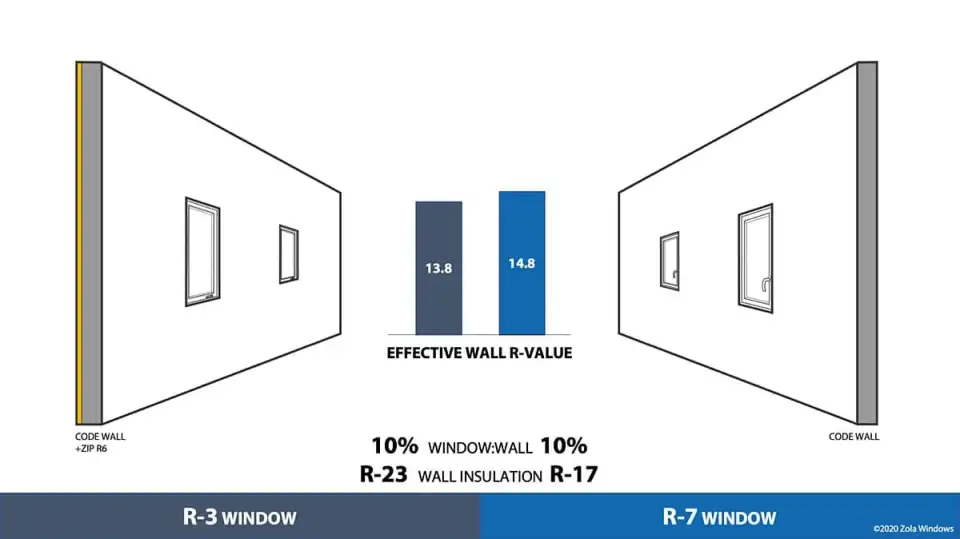
Scenario 1 (above) shows that unless you are using good windows, increasing insulation won’t get you far in improving wall performance. On the left we see an R‑23 wall assembly (2x6 wall with cavity insulation plus ZIP-R6 exterior insulation), but with mediocre, R‑3 windows installed. On the right we see a code-minimum R‑17 wall, but with high performance, R‑7 windows installed. Because the code minimum wall uses these high performance windows, it actually outperforms the wall with the added exterior insulation; its effective R‑Value is 14.8, versus 13.8 for the thicker wall with inferior windows.
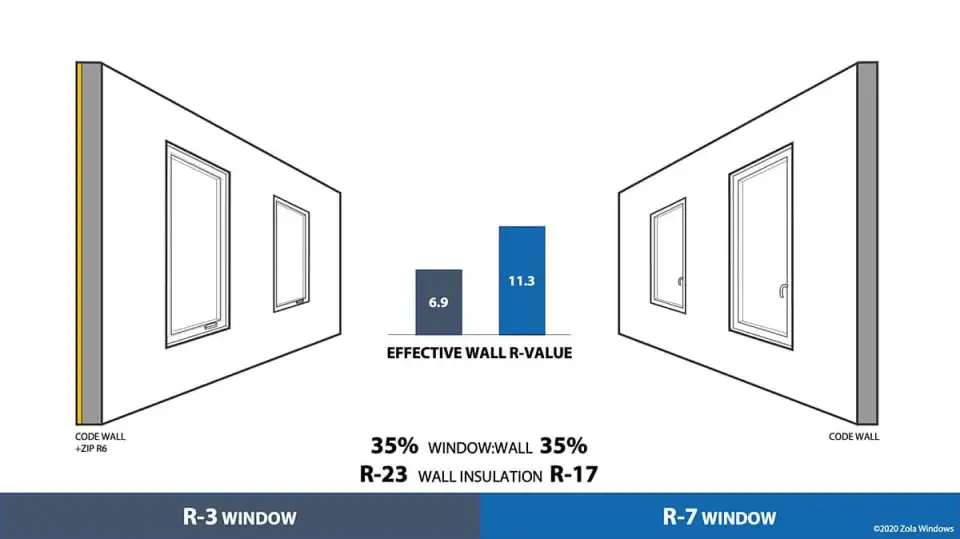
Notice that Scenario 1 assumes a low window-to-wall ratio (Window:Wall or WWR) of just 10%: fairly miserly glazing. The relative benefit of the R‑7 windows only increases as the WWR grows. Scenario 2 (above) shows that with a WWR of 35%, the code minimum wall assembly with R‑7 windows outperforms the wall with extra insulation but R‑3 windows by nearly double, 11.3 versus 6.9 in effective R‑value.
Better Windows Make Bigger Windows Possible
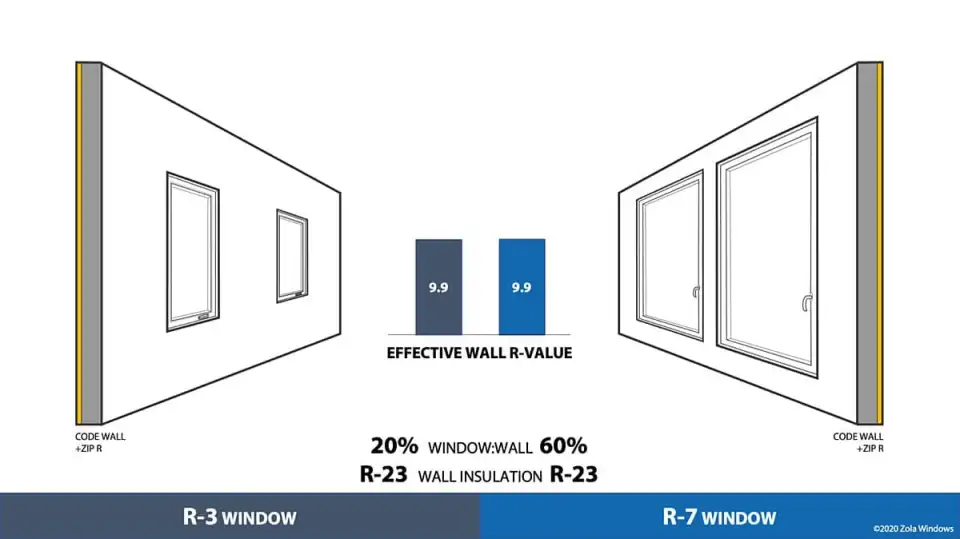
Scenario 3 (above) compares two identical wall assemblies (both using the R‑23 assembly with the exterior insulation) and, holding the effective R‑value of the two walls equal, explores how much bigger the R‑7 windows can be compared to the R‑3 windows. The result: the R‑7 windows can be three times bigger than the R‑3 windows and still achieve identical effective wall R‑value.
Good Windows + More Insulation = Really Good Performance
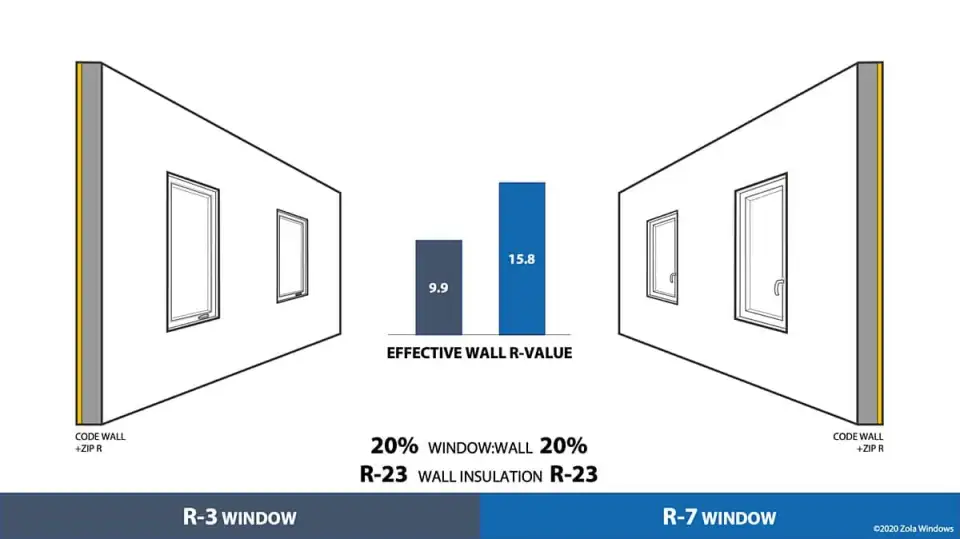
As Scenario 4 (above) shows, when you take a better-than-code wall (again, the R‑23 assembly with the exterior insulation) and add decent windows, you leverage better performance results. The R‑7 windows garner an effective R‑value of 15.8 for the wall, while the R‑3 windows drop that to just 9.9. Now, imagine improving on that R‑23 assembly with more insulation; those R‑7 windows leverage even better performance. That’s how windows facilitate Passive House envelope design.
Only Insulation Heroics Can Make Up for Bad Windows
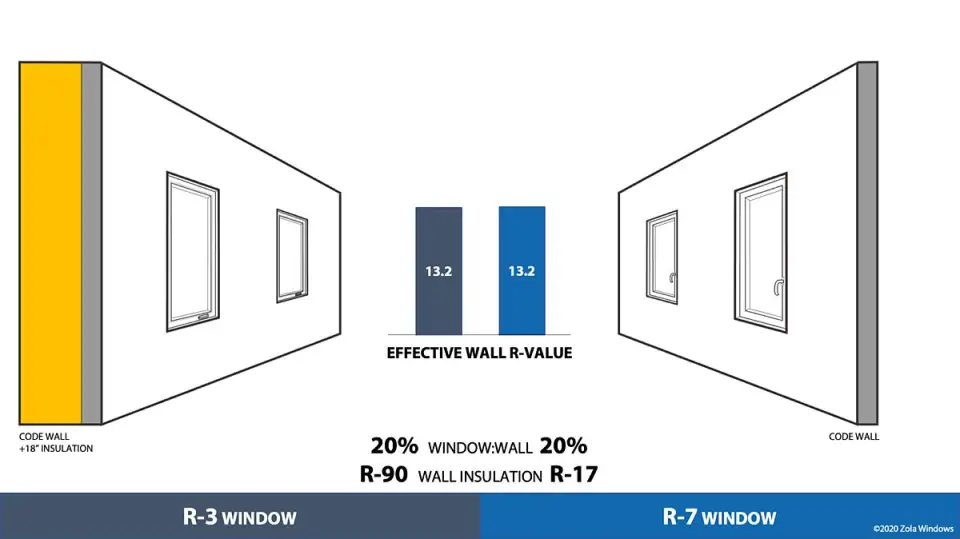
Scenario 5 (above) really drives home how much more consequential window performance can be on the thermal performance of your building than insulation, even at a modest 20% window to wall ratio. In order for the wall on the left, with its R‑3 windows, to perform as well as the 2x6 wall on the right with R‑7 windows, you would have to build an insulated wall assembly roughly two feet thick.
R‑7 Windows Should Be “Run of the Mill”
The performance impacts of R‑7 windows are remarkable. But honestly, we see these impacts every day. In the high performance European window world, R‑7 is run of the mill. For a bit of context, we offer windows that perform at R‑11, ones that are currently being applied to a research station in Antarctica. R‑7 is by no means the pinnacle of high performance windows. It’s just a good, decently-performing window. But that’s fine for the typical multifamily building or budget single family home in North America. There’s no reason that these projects shouldn’t be using R‑7 or R‑8 windows. After all, we collectively have lots of options in uPVC that are available at a price point that is competitive with conventional R‑3 windows.
Regardless of your building type, high‑R windows have tremendous power to optimize performance, maximize glazing flexibility, and achieve Passive House-levels of performance building-wide.
[Featured photo above is of Accord Passive House.]